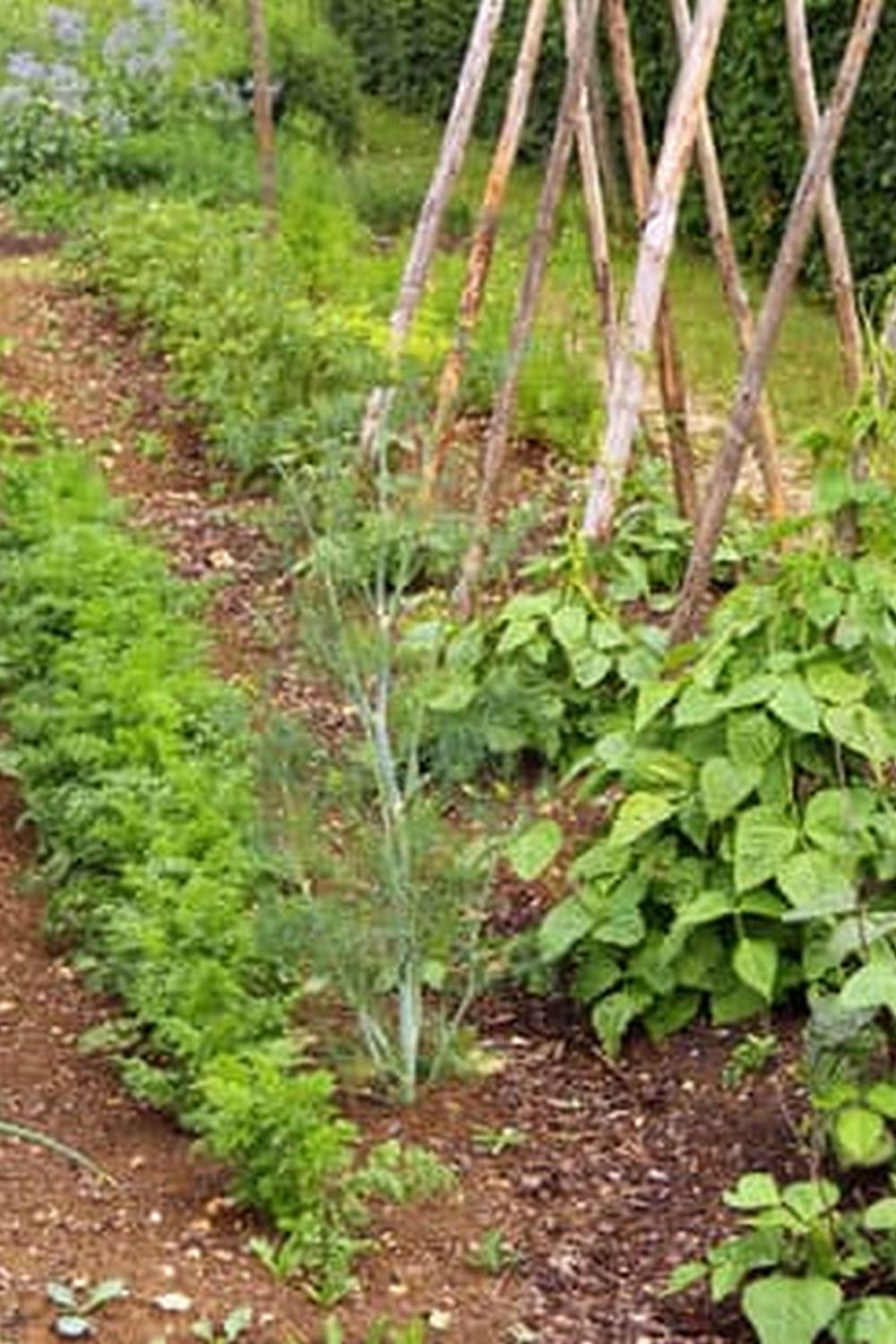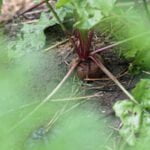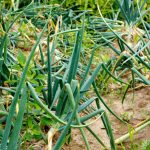Flowers in vegetable gardens add not only beauty but also numerous benefits to your gardening space. Incorporating flowers alongside your veggies can attract pollinators, enhance biodiversity, and even improve the health of your crops. In this article, we will explore the advantages of integrating flowers into vegetable gardens, different types of flowers that thrive in such environments, and how companion planting with flowers can help vegetables flourish.
By strategically choosing and planting flowers in your vegetable garden, you can create a more visually appealing and vibrant space while also reaping the rewards of a symbiotic relationship between the flowers and vegetables. From marigolds to sunflowers, there is a wide variety of flowers that not only complement your veggies but also provide additional benefits such as pest control and soil enrichment.
Understanding which flowers work best in combination with specific vegetables is key to achieving a successful flower and vegetable garden.
Whether you’re a seasoned gardener or just starting out, learning how to design and maintain a flower and vegetable garden can be a fulfilling experience. From selecting colors and heights for visual interest to ensuring proper care through watering and fertilizing techniques, there are many factors to consider when creating a harmonious balance between flowers and vegetables in your garden.
Stay tuned as we delve deeper into the world of flowers in vegetable gardens to help you cultivate a flourishing and picturesque outdoor space.
Benefits of Incorporating Flowers Into Vegetable Gardens
Adding flowers to your vegetable garden can offer a multitude of benefits beyond simply aesthetic appeal. One key advantage is the potential to attract pollinators such as bees, butterflies, and other beneficial insects. These pollinators play a crucial role in the reproduction of many vegetable plants, leading to increased yields and healthier crops. Additionally, some flowers act as natural pest repellents, helping to protect your vegetables from harmful insects without the need for chemical pesticides.
Incorporating flowers into your vegetable garden can also improve the overall health of the soil. Certain flowers have deep root systems that help break up compacted soil, allowing better aeration and water infiltration for your vegetable plants. Furthermore, some flowers are known for their abilities to fix nitrogen in the soil, which can benefit neighboring plants by providing them with this essential nutrient.
Another benefit of including flowers in your vegetable garden is the potential for biodiversity. By creating a diverse ecosystem with a variety of plant species, you can create a more resilient and balanced garden environment. This diversity can help suppress weeds, reduce disease pressure, and support overall ecosystem health. With careful selection and placement of complementary flowers, you can enhance the productivity and resilience of your vegetable garden while adding beauty and color to your outdoor space.
Types of Flowers That Thrive in Vegetable Gardens
When it comes to choosing the right flowers for your vegetable garden, there are several factors to consider. One of the most important considerations is selecting flowers that will not only enhance the beauty of your garden but also provide benefits to your vegetables.
Marigolds are a popular choice for vegetable gardens because they can help repel pests like nematodes and beetles. Their bright blooms also add a pop of color to the garden, creating a visually appealing contrast with the green foliage of vegetables.
Another excellent option for a flower in your vegetable garden is nasturtiums. These vibrant flowers not only attract pollinators like bees and butterflies but also deter pests such as aphids and whiteflies. Additionally, nasturtiums are edible and can be added to salads or used as garnishes, providing both aesthetic and culinary value to your garden.
For a touch of elegance in your vegetable garden, consider planting lavender. Known for its soothing aroma and beautiful purple spikes, lavender attracts beneficial insects like bees while repelling unwanted pests such as moths and fleas. In addition, lavender has medicinal properties and can be used in teas or homemade remedies. Its versatility makes it a valuable addition to any flower and vegetable garden.
Choosing the Right Flowers
When selecting flowers for your vegetable garden, it’s essential to choose varieties that complement each other in terms of height, color, and bloom time. Opt for flowers that will not overshadow or compete with your vegetables but rather enhance the overall aesthetics of the garden. Consider planting a mix of annuals and perennials to ensure continuous blooms throughout the growing season.
Complementary Planting Strategies
Incorporating flowers that attract pollinators or beneficial insects can help improve pollination rates in your vegetable garden, leading to better harvests. Be strategic in where you plant these flowers to maximize their benefits – place them near susceptible crops or intersperse them throughout the garden to create natural pest barriers. Additionally, consider planting flowering herbs like dill or cilantro among your vegetables to attract insect predators that feed on common pests like aphids or caterpillars.
By carefully selecting the right types of flowers for your vegetable garden and employing companion planting strategies, you can create a harmonious ecosystem that promotes healthy growth for both plants while enhancing the visual appeal of your garden. With proper care and maintenance, your flower and vegetable garden will not only be beautiful but also productive throughout the growing season.
Companion Planting
Flowers can serve as more than just beautiful decorations in a vegetable garden – they can actually play a crucial role in helping vegetables thrive. By strategically planting flowers alongside your vegetables, you can benefit from increased yields, natural pest control, and improved pollination. Here are some key ways in which flowers can support the growth of your vegetable plants:
- Attract Beneficial Insects: Certain flowers are known to attract beneficial insects like ladybugs, bees, and butterflies, which can help pollinate your vegetable crops and prey on harmful pests.
- Repel Harmful Pests: Some flowers have natural properties that repel common pests that might threaten your vegetables. Marigolds, for example, are effective at deterring nematodes in the soil.
- Provide Shade and Support: Taller flowering plants can offer shade to sun-sensitive vegetables or serve as trellises for climbing vegetables like beans or cucumbers.
Incorporating flowers into your vegetable garden not only adds visual appeal but also contributes to a healthier and more vibrant ecosystem. By taking advantage of the symbiotic relationships between certain flowers and vegetables, you can create a balanced and thriving garden space that benefits both plants.
Types of Flowers That Thrive in Vegetable Gardens
When selecting flowers to plant alongside your vegetables, it’s important to choose varieties that will complement each other in terms of growth habits, soil needs, and blooming times. Here are some popular types of flowers that thrive in vegetable gardens:
- Sunflowers: These tall blooms provide shade for sun-sensitive plants like lettuce or spinach while attracting pollinators with their bright petals.
- Nasturtiums: With edible leaves and vibrant blooms, nasturtiums not only add color to your garden but also deter aphids and caterpillars with their peppery scent.
- Lavender: Known for its aromatic fragrance, lavender attracts bees for pollination while repelling pests like mosquitoes and moths.
By incorporating these and other flower varieties into your vegetable garden design, you can create a harmonious and mutually beneficial environment where both plants can thrive together. Remember to consider factors such as sunlight exposure, watering needs, and planting spacing when choosing the perfect mix of flowers for your vegetable garden.
Tips for Designing a Beautiful Flower and Vegetable Garden
When it comes to designing a beautiful flower and vegetable garden, planning is key. One important aspect to consider is the layout of your garden. To create an aesthetically pleasing space, think about the colors, heights, and textures of both flowers and vegetables. Combining tall sunflowers with low-growing lettuce or colorful marigolds with vine tomatoes can add visual interest to your garden.
Incorporating Pathways and Borders
In addition to plant selection, pathways and borders can enhance the overall design of your flower and vegetable garden. Create defined pathways using materials such as gravel, stepping stones, or wood chips to separate different planting areas. You can also use edging materials like bricks or stones to create borders around each section of your garden to give it a polished look.
Adding Decorative Elements
To elevate the beauty of your flower and vegetable garden, consider adding decorative elements such as trellises, arbors, or garden sculptures. These features not only add visual appeal but can also provide support for climbing plants like beans or cucumbers. Bird baths, wind chimes, or colorful plant markers can also add charm to your garden while attracting beneficial wildlife.
Creating a Seasonal Garden Plan
Lastly, when designing your flower and vegetable garden, think about creating a seasonal plan that ensures blooms throughout the year. Choose flowers that bloom at different times so that there is always something in full bloom in your garden. Incorporating early spring bulbs like tulips, summer favorites like zinnias, and fall-blooming asters can provide color and interest year-round in your vegetable garden filled with edible plants.
Important Considerations for Maintenance and Care of Flowers in Vegetable Gardens
When it comes to maintaining and caring for flowers in vegetable gardens, there are several key considerations to keep in mind to ensure the health and beauty of your plants. Here are some important tips and guidelines to help you maintain a thriving flower and vegetable garden:
- Watering: Flowers in vegetable gardens may have different watering needs than vegetables, so it is important to understand each plant’s requirements. Generally, flowers need consistent moisture, so be sure to water them regularly, especially during hot and dry periods.
- Pruning: Regular pruning is essential for promoting healthy growth and blooming in flowers. Remove spent blooms to encourage new flowers to form and prune any dead or damaged branches to maintain the overall health of the plants.
- Fertilizing: Proper fertilization is crucial for ensuring that both your flowers and vegetables receive the nutrients they need to thrive. Consider using a balanced fertilizer or organic compost to provide essential nutrients throughout the growing season.
In addition, it is important to pay attention to potential pests and diseases that may affect your flowers in vegetable gardens. Keep an eye out for signs of infestation or disease, such as yellowing leaves or unusual spots, and take proactive measures to address any issues before they become serious.
Overall, regular maintenance and care are key factors in successfully growing flowers in vegetable gardens. By staying vigilant with watering, pruning, fertilizing, and monitoring for pests and diseases, you can create a beautiful and bountiful garden that showcases the harmonious relationship between flowers and vegetables.
Common Challenges and Solutions for Growing Flowers in Vegetable Gardens
When it comes to incorporating flowers in vegetable gardens, there are common challenges that gardeners may face. One of the main challenges is maintaining a balance between the flowers and vegetables in terms of space, sunlight, and nutrients. Since vegetables typically require more space and nutrients to grow compared to flowers, it is important to plan the layout of your garden carefully.
Another challenge that gardeners might encounter is pests and diseases affecting both the flowers and vegetables. Some pests may be attracted to certain types of flowers or vegetables, leading to potential damage to the entire garden. Implementing integrated pest management strategies such as companion planting can help deter pests naturally without the need for harsh chemicals.
Furthermore, competition for resources such as water and sunlight between flowers and vegetables can be a challenge in mixed gardens. Flowers tend to have shallow root systems compared to vegetables, which can lead to them competing for water and nutrients. Proper irrigation techniques and strategic planting can help mitigate this issue and ensure that both flowers and vegetables thrive harmoniously.
| Common Challenges | Solutions |
|---|---|
| Maintaining balance between flowers and vegetables | Plan layout carefully; provide adequate space, sunlight, and nutrients |
| Pests and diseases affecting both flowers and vegetables | Implement integrated pest management strategies like companion planting |
| Competition for resources like water and sunlight | Use proper irrigation techniques; plant strategically to mitigate competition |
By being aware of these common challenges and implementing appropriate solutions, you can enjoy the beauty of flowers in your vegetable garden while ensuring that both plants thrive harmoniously. With careful planning, maintenance, and care, you can create a stunning garden that not only looks visually appealing but also provides numerous benefits for your overall gardening experience.
Success Stories
When it comes to combining flowers and vegetables in a garden, the results can be truly stunning. One popular example of a successful flower and vegetable garden combination is the use of marigolds alongside tomatoes.
Marigolds not only add a vibrant splash of color to the garden but also help repel pests that might harm tomato plants. This symbiotic relationship between the two plants not only enhances the aesthetic appeal of the garden but also contributes to the overall health of the vegetable crops.
Another great success story in the world of flower and vegetable garden combinations is the pairing of zinnias with cucumbers. Zinnias are known for their bright and beautiful blooms, which can attract beneficial insects like bees and butterflies to the garden. These pollinators, in turn, help increase cucumber yields by ensuring better fruit set. The combination of zinnias and cucumbers not only creates a visually appealing garden but also improves overall crop productivity.
One more real-life example of a stunning flower and vegetable garden combination is the strategic placement of nasturtiums with squash plants. Nasturtiums not only add a pop of color to the garden with their vibrant flowers but also act as a natural deterrent against pests like aphids, whiteflies, and squash bugs.
By interplanting nasturtiums with squash, you can create a harmonious and pest-resistant environment that benefits both plants. This successful pairing demonstrates how thoughtful companion planting can enhance both the beauty and productivity of a vegetable garden.
| Flower-Vegetable Combination | Benefit |
|---|---|
| Marigolds with Tomatoes | Adds color to the garden while repelling pests |
| Zinnias with Cucumbers | Attracts pollinators for higher yields |
| Nasturtiums with Squash Plants | Acts as natural pest repellent for improved crop health |
Conclusion
In conclusion, the integration of flowers in vegetable gardens not only adds beauty but also brings numerous benefits to the overall garden ecosystem. By incorporating a variety of flowers alongside your vegetables, you can attract beneficial insects like pollinators and natural predators that help maintain a healthy balance in the garden. Additionally, the vibrant colors and scents of flowers can uplift the mood and create a visually appealing landscape that enhances the gardening experience.
Furthermore, certain types of flowers serve as natural repellents for pests, acting as a form of companion planting that helps protect your precious vegetable crops without relying on harmful chemicals. The symbiotic relationship between flowers and vegetables in the garden not only promotes biodiversity but also contributes to better yields and overall plant health.
For those looking to embark on a journey of creating a flower and vegetable garden, it is important to consider factors such as proper design, maintenance, and addressing potential challenges along the way. By following some key tips and strategies outlined in this article, you can create a stunning garden that not only nourishes your body with fresh produce but also feeds your soul with the beauty of nature’s diverse flora.
So go ahead, let your imagination bloom with the colorful possibilities of integrating flowers into your vegetable garden for a truly harmonious and rewarding gardening experience.
Frequently Asked Questions
Can You Put Flowers in a Vegetable Garden?
Yes, you can definitely put flowers in a vegetable garden. In fact, planting flowers alongside vegetables can be beneficial for attracting pollinators, deterring pests, and adding beauty to your garden. It’s important to choose the right flowers that complement your vegetable plants.
What Flowers Are Good in Vegetable Garden?
Some flowers that are known to be good companions in a vegetable garden include marigolds, nasturtiums, calendula, and lavender. Marigolds help repel nematodes, nasturtiums attract aphids away from your vegetables, calendula attracts beneficial insects, and lavender has a calming effect on pests.
What Flowers Not to Plant in a Vegetable Garden?
While flowers can be beneficial in a vegetable garden, there are certain ones that should be avoided. For example, sunflowers can compete with vegetables for nutrients and water due to their deep root systems.
Additionally, plants like lilies or irises may contain toxic compounds that could affect the growth of nearby vegetables. It’s important to do thorough research before selecting flowers for your vegetable garden.

If you’re looking to get into vegetable gardening, or are just looking for some tips on how to make your current garden better, then you’ve come to the right place! My name is Ethel and I have been gardening for years. In this blog, I’m going to share with you some of my best tips on how to create a successful vegetable garden.





